Libraries are essential cultural and educational facilities for people’s lives, work, and studies. Unlike other iconic buildings, libraries should not only be revered but also provide a comfortable and cozy atmosphere, serving as a third space accessible to anyone.

History of the Library
Evolutionary Stage-
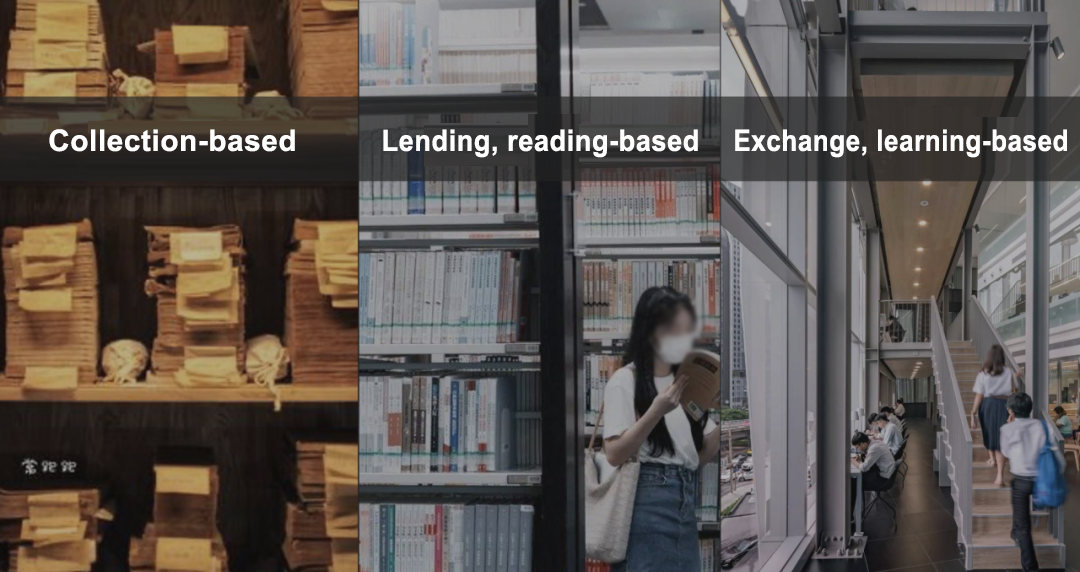
Libraries have undergone three generations of development.
The first generation was dominated by book collections. Before the printing press, knowledge was almost exclusively held by the intellectual class, who also controlled the reading space as storage space. With the spread of education and popularization of reading, libraries evolved to meet the needs of the public.
The second generation of libraries focused on lending. In the 1990s, the ‘storage’ model was replaced by a ‘learning center’ model, which prioritized the user. This shift allowed libraries to focus on meeting the needs of their users.
The third generation of libraries emphasizes their role as a third space and promotes the transformation of services. The future of library development lies in learning, communication, and experience. Libraries will serve as knowledge centers, learning centers, and communication centers. The focus will be on four functions: promoting knowledge circulation, innovating communication, enhancing literacy diversity, and stimulating community vitality.
To build a one-stop collaborative learning environment for users, we have added a large number of service spaces, including study, social, creative, and leisure spaces.
In summary, the library building can be divided into three design stages. The first stage focuses on the resources, the second stage involves opening up, and the third stage is the ‘people’s library’ where people, resources, and space are highly integrated and interactive. This integration creates a highly functional and accessible space for all.
Causes of Evolution-
The evolution of libraries can be attributed to three main reasons.
Firstly, technological advancements have led to the dataization of knowledge, making learning more mobile and accessible.
Secondly, the traditional preview space has lost its appeal, and thirdly, the interaction between learners and the environment plays a crucial role in knowledge construction. Constructivism posits that an ideal learning environment should include context, collaboration, communication, and meaning construction. Learners exchange knowledge and ideas through communication, negotiation, and debate. Libraries should support and facilitate this process, assisting students in creating knowledge.
Thirdly, individuals require not only reading spaces but also a variety of diverse learning spaces, including those for communication, collaboration, contextualization, and hands-on learning.
Insight Into the State of Libraries
While many libraries in major cities strive to enhance the learning experience of their patrons, their functions remain primarily limited to borrowing, reading, and collecting.
The single space function is no longer sufficient to meet the diverse needs of readers. Additionally, there are issues with inadequate response to communication, learning, and interactive needs, insufficient support for hardware equipment, poor handling of noise zoning, irrational layout of some spaces, and low space utilization. Furthermore, poor environmental comfort and sense of quality can negatively impact readers’ experience. Finally, there are problems with poor space plasticity and limited future development.
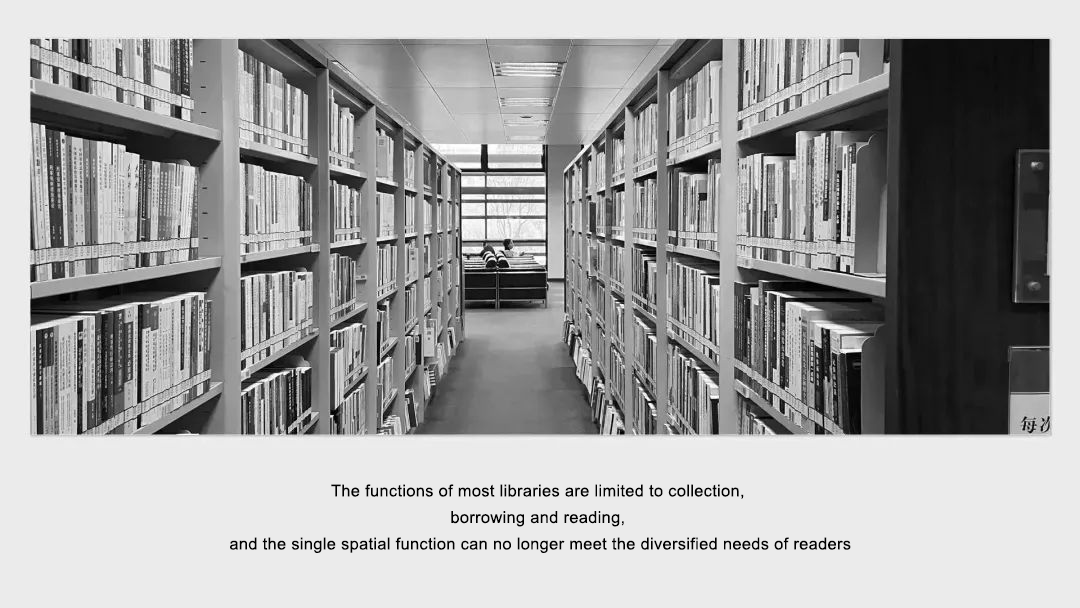
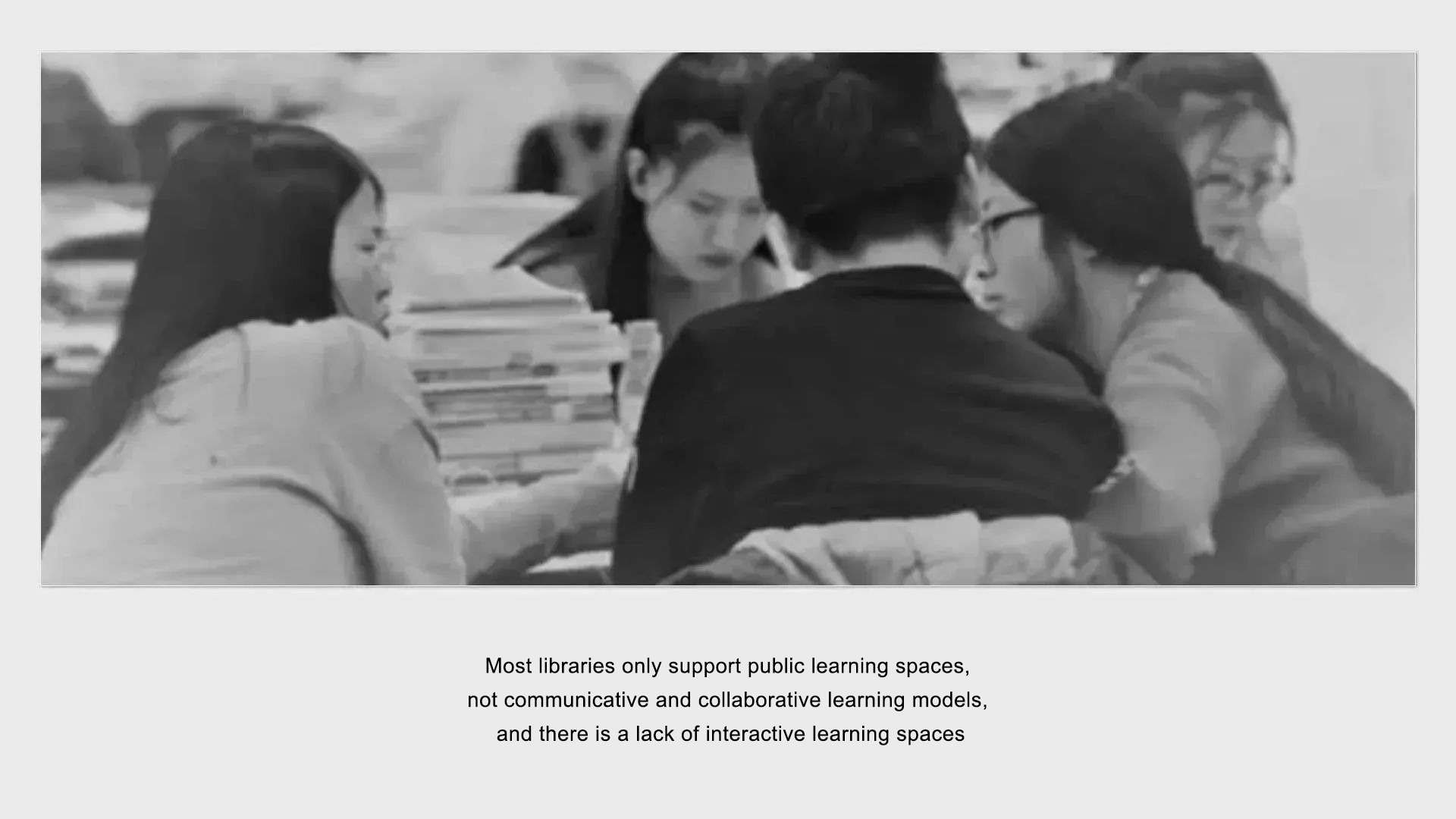


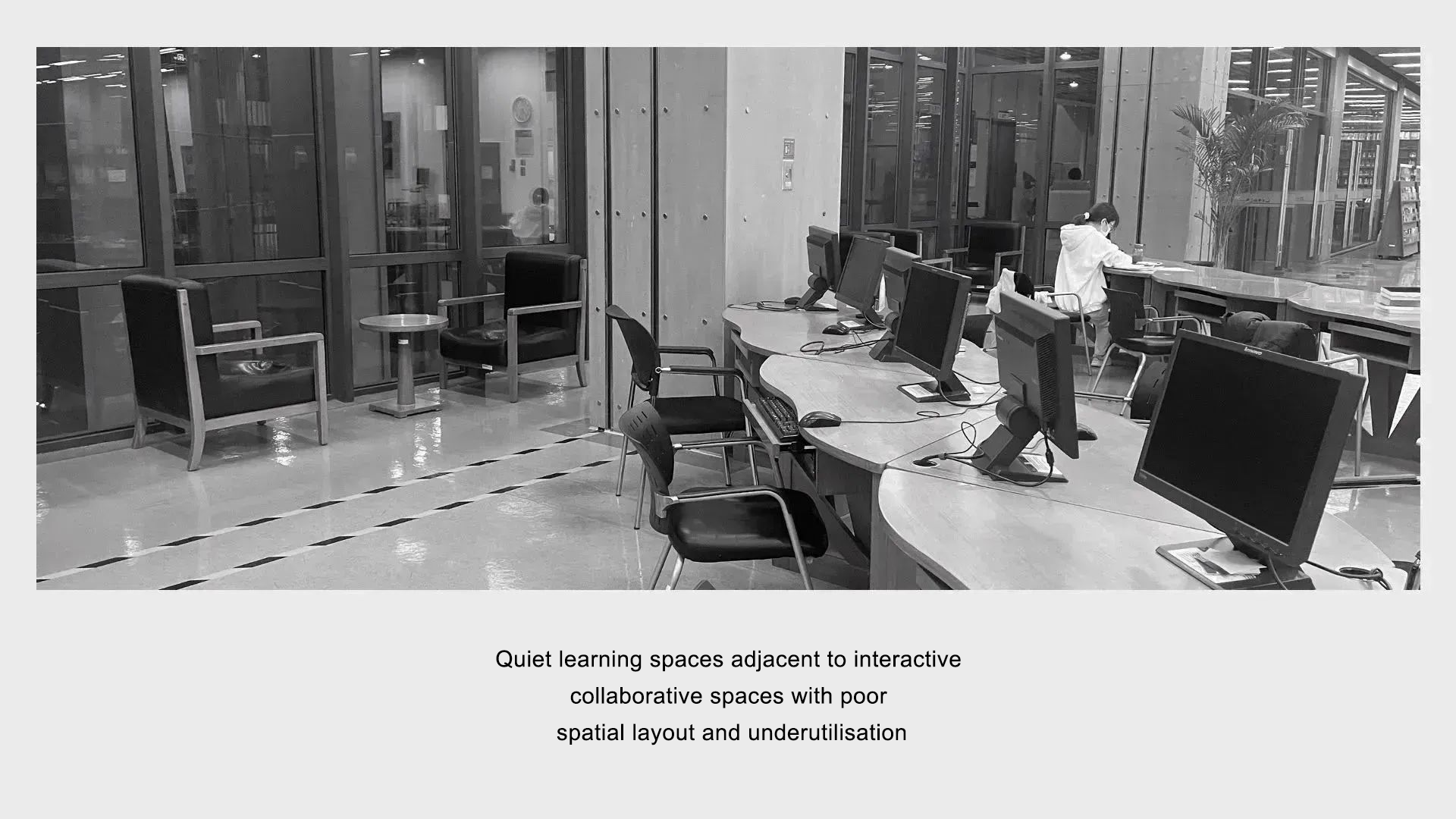
Design of Library Space
Three Elements of Space-
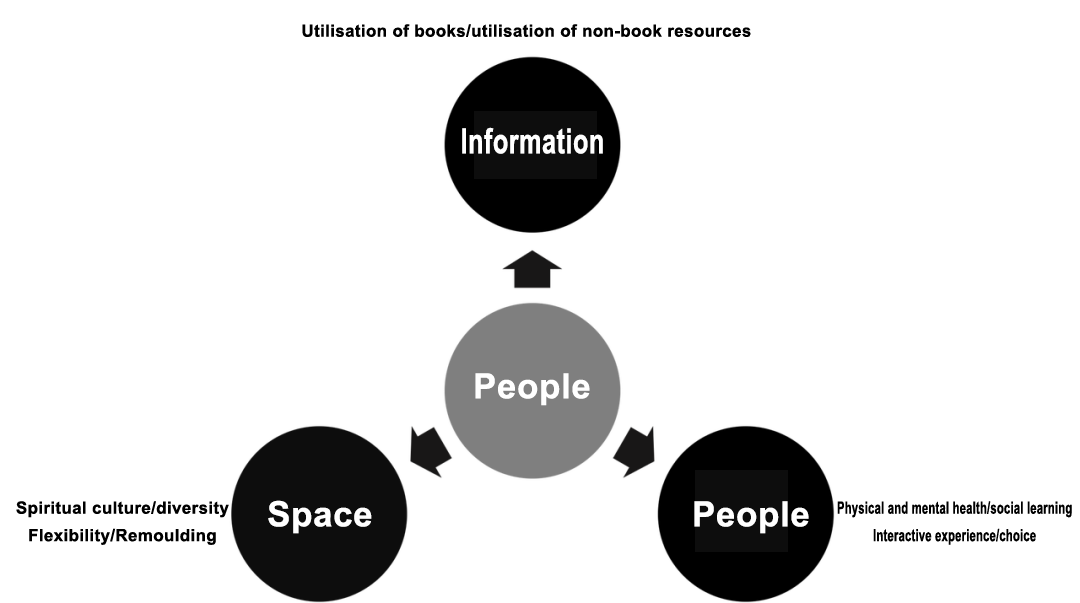
Spacial Classification-
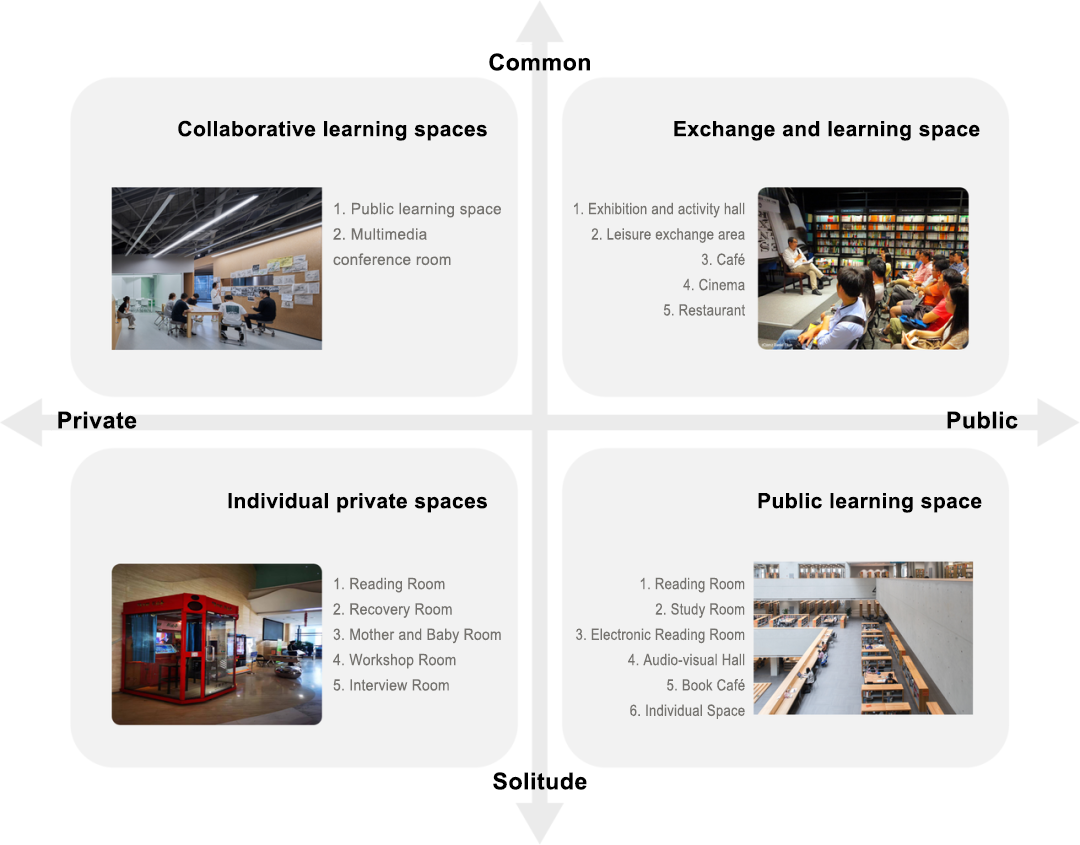
Design Principal-
1 ) Modularization, Low Cost Reinvention
The modular principle allows for a flexible layout of furniture composed of different functional spaces, with a large space, unified column network, floor height, and loading capacity. This design strives to adapt to the needs and development of a variety of library functions, meeting multifunctional space needs and avoiding space waste.
Modularization is important for creating an open and flexible space that can be easily converted into other spaces based on the basic functions. Functional partitioning should be done according to different functional spaces.
Additionally, modularization allows for reconfiguration to support future needs.
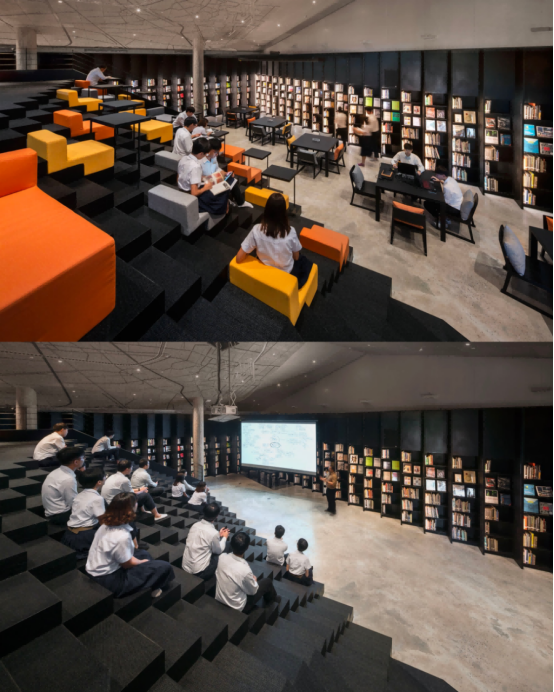
2) Open & Private
Open: The library, as a public building, should be accessible to all. It is a place for free communication and sharing of knowledge.
Privacy: Privacy is also an important factor in providing a positive experience for readers.
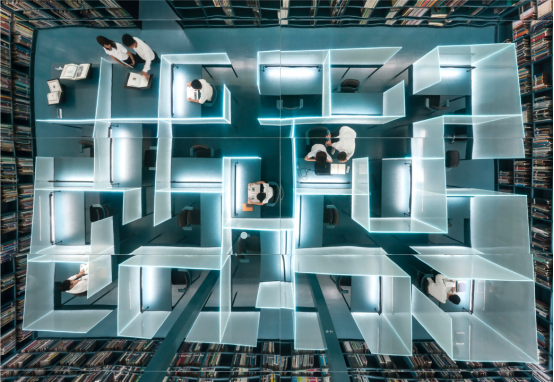
3) Diversification of Space Functions
In addition to the main storage and reading areas, libraries should also include cultural and creative stores, coffee bars, discussion rooms, lecture halls, lobby rest areas, and promenades. This breaks the single functional attribute of libraries and transforms them into true public cultural centers that integrate socialization and knowledge.
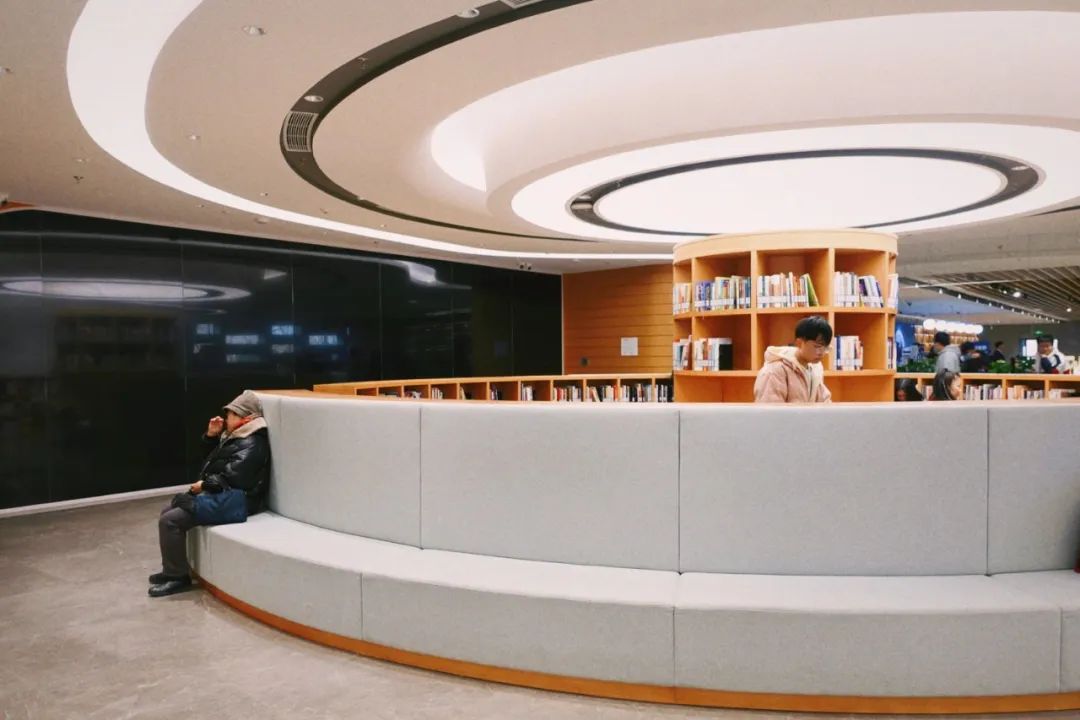
4) Comfort & Functionality & Convenience
Comfort: The furniture selection should meet ergonomic requirements and prioritize comfort. Soft fabrics are recommended for study rooms, reading spaces, and other inward-looking areas. When selecting furniture, consider the visual appeal and how it fits within the space.
Functionality: University libraries must balance the needs of teaching, learning, and research teams in their space design. Public libraries, on the other hand, must balance leisure and intellectual curiosity.
Convenience: Libraries should be inviting, user-friendly, and promote independent social spaces where patrons can learn, socialize, and engage with culture.
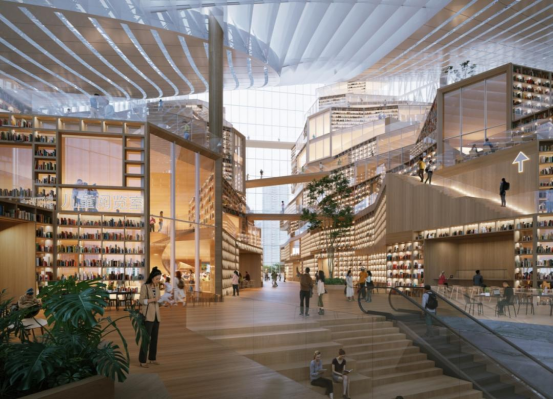
Product Solution-
Creating Highly Adaptable Libraries
- Meeting the need for modular restructuring and low-cost remodeling
- Easily solve the problem of privacy in public space
- Diversification of space functions
- Ensure space comfort, functionality and convenience
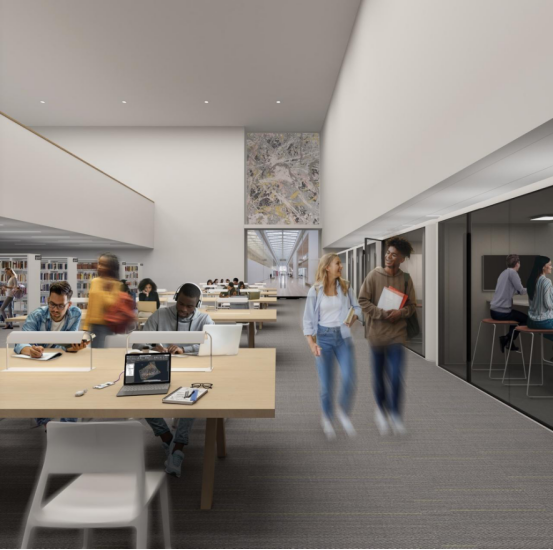
Cubicle systems enable the isolation of private spaces for individual concentration and small collaborative exchanges in open spaces – meeting the multi-dimensional needs of learning.
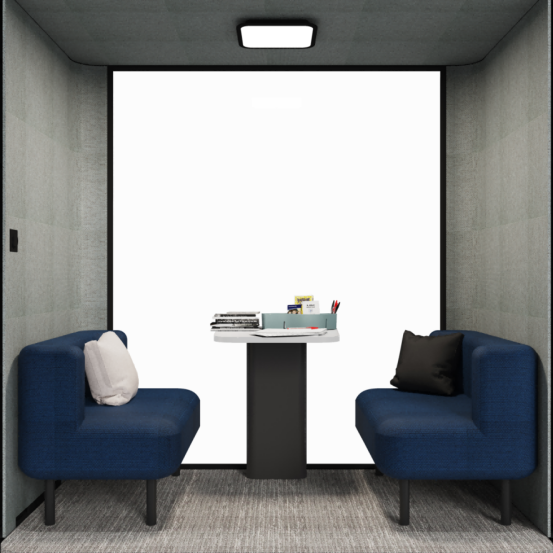
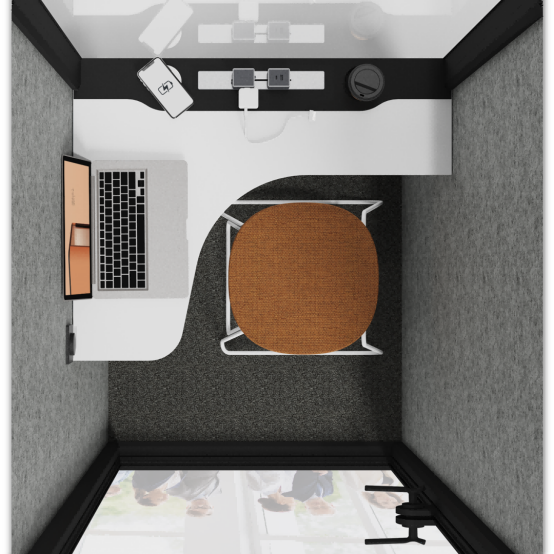
Large cubicle systems are able to fullfil a wide range of space functions. It can function as a “manufacturing lab”, “media lab”, “coding”, “3D printing”, etc., providing an open platform for creators to exchange ideas, display their creativity and collide ideas.
When creating new interactive spaces, libraries must consider the needs of patrons for both sound and quiet environments, as well as their need for privacy.
It is important to strike a balance between quiet study space and interactive and collaborative space, and to provide space and services for readers with various needs.
Media Contact
Company Name: Ningbo Cheerme Intelligent Furniture Co., Ltd.
Email: Send Email
Country: China
Website: https://www.cheermebooth.com/
